As part of our new temporary exhibition “Ingenious inventions – Innovative ideas: Episodes from the history of ancient technology” we are regularly presenting online 2000-year-old innovations in science and technology, and give tips on how those interested can become ancient engineers. At the heart of our second episode is Philon of Byzantium: Everyone’s favourite science teacher from Antiquity.
Historians believe Philon, a scientist from Byzantium (which later became Constantinople) was a disciple of Ctesibius. Hardly anything is known about his life other than that he too worked in Alexandria, presumably at the ancient citadel of science, the Musaeum during the 3rd century BC. He wrote a major treatise on his research, results and teachings, the Mechanical Syntaxis, of which parts have survived. From these it is clear that Philon was well-versed in the physics and mathematics of his time, complementing the theoretical discussions with clever, practical experiments. Some of these can still be used in education today to demonstrate the laws of physics.
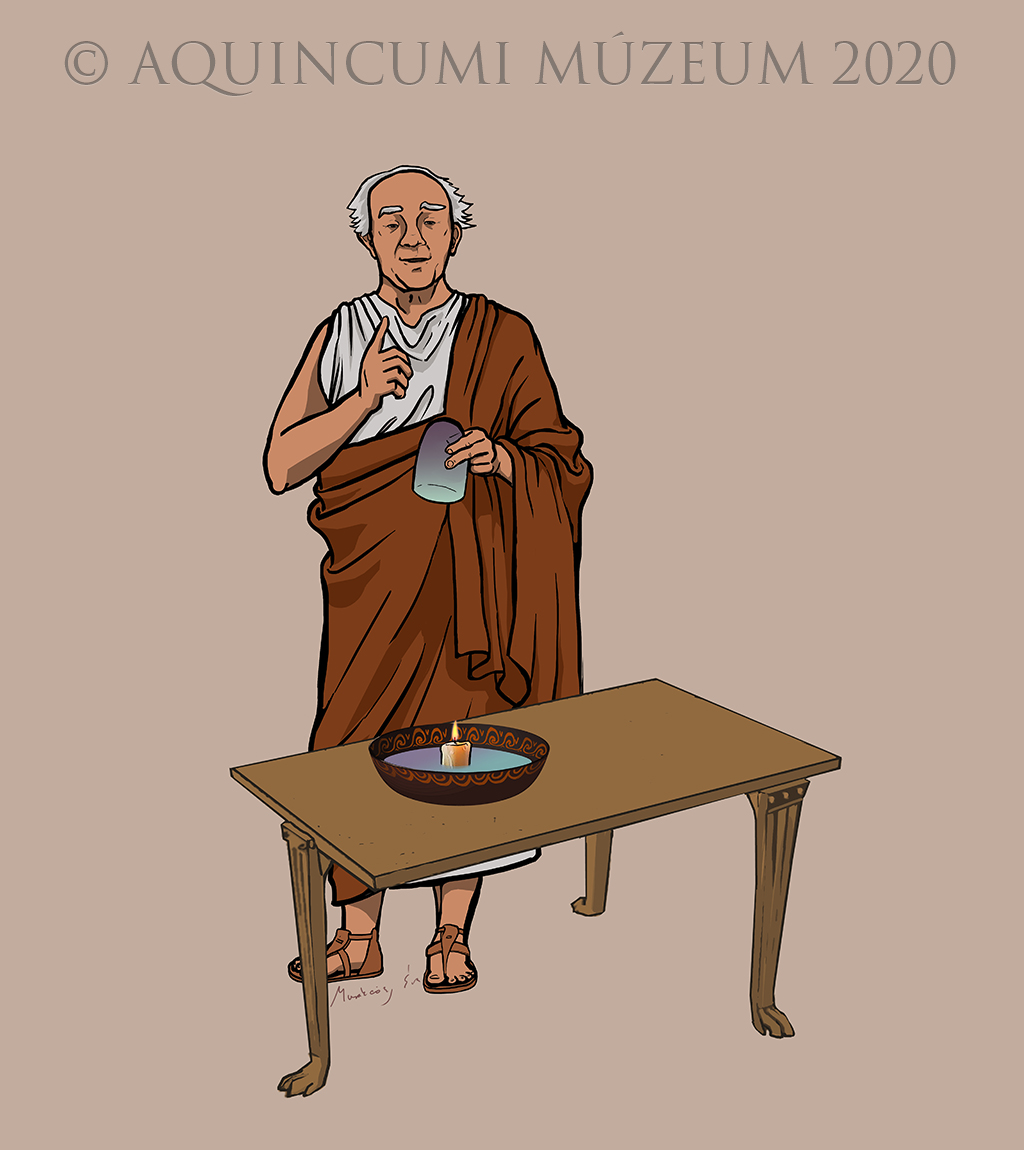
Philon of Byzantium presents his candle experiment (drawing by Éva Murakeözy)
His treatise also covered countless practical uses of mechanics. Those of his books which survived in the original Greek were on military engineering, covering siege engines, defensive equipment, and siegecraft. The first contains a description of the air-powered weapon invented by Ctesibius, from which we also learn that ancient engineers were already able to produce carefully-lathed, tightly-fitted piston pumps; this is further supported by a number of archaeological finds from the Roman period. His book entitled Pneumatics survived in Latin and Arabic, though versions in the latter contained several later additions. This book describes various experiments and also presents Philon’s widely-used invention, the bucket-chain for raising water. Until then, for lifting large quantities of water, they used a scoop wheel or water wheel, which could only deliver the water to a limited height. Philon’s invention made it possible to lift water higher, to be used for irrigating gardens and fields and bringing water to palaces and forts.
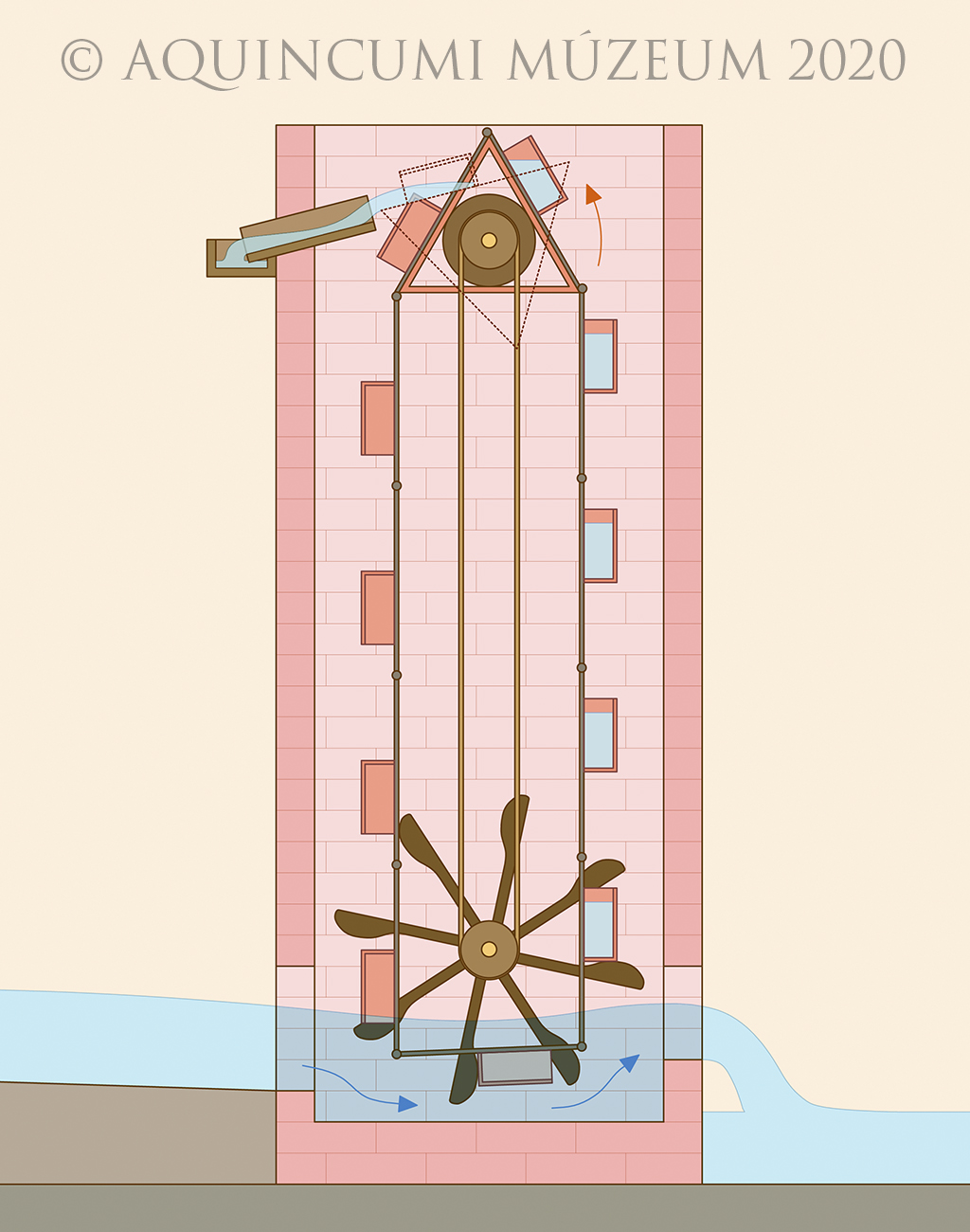
The bucket-chain water-lifting device invented by Philon (drawing by Tamás Lajtos)
Later generations’ recognition of Philon is indicated by the translations and copies of his books, and also the laudatory words by Heron of Alexandria: “among my predecessors’ writings there is none greater than the expositions of Philon of Byzantium”. What made him so popular later on was perhaps that he explained his experiments – which looked like magic at first – in a rational and effective way. His explanations used the laws of physics and not ‘sorcery’, while also avoiding the pitfalls of dry, theoretical discussions. It is no wonder that the engineers of the Renaissance drew so much from his work!
Become an ancient engineer!
Is air also matter?
Let’s open Pneumatics! As it happens, I have a copy of the book, although it’s only the 1974 edition. We’ll demonstrate the experiment described in chapter 7. What we’ll need is a medium-sized lead egg, hollow and not too thin-walled. Considering that acquiring a lead egg might be a bit difficult these days, let’s use a 5-litre glass jar instead. We’ll also need a very thin tube and another vessel.
Bend the tube. Pour a little water into the large glass jar. Drill a hole into its lid, and place the tube into the glass jar so that it almost reaches the bottom. Thoroughly seal the lid around the tube and keep the lid tight on the jar. Place the other end of the tube in the other vessel. Start heating the glass jar. Philon put it out in the sun, but let’s use a hair dryer instead.
What do we see? The heated air expands and displaces the water. The water flows up the tube and into the other vessel. When the large glass jar cools down, the water flows back.
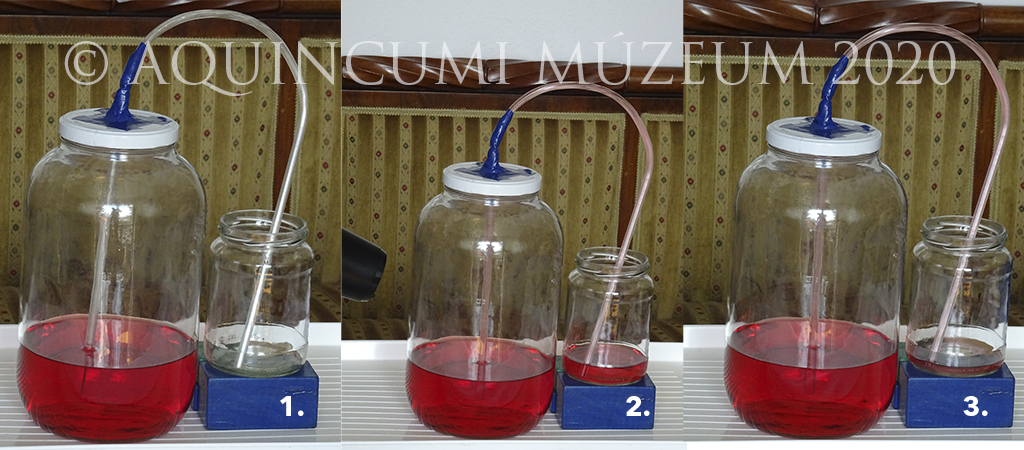
Philon of Byzantium’s experiment
“What we present here is one of the foundations of the science of pneumatics, which rests on similar experiments. This can take place because there is no void. When the air moves, another adjacent body takes its place. This is the view of countless natural scientists and I [i.e. Philon of Byzantium] agree with them.”
Philon of Byzantium’s candle experiment
This experiment is described in chapter 8. What we’ll need is a bowl, a candle, a holder to keep the candle steady, and a glass or a thin glass jar. Place the candle in the bowl. Pour water into the bowl, and then light the candle. Carefully cover the candle with the glass. Soon the candle goes out and water begins to rise in the glass. According to Philon, the air from the glass disappears because of the burning candle, and the space it leaves empty is taken by the water.
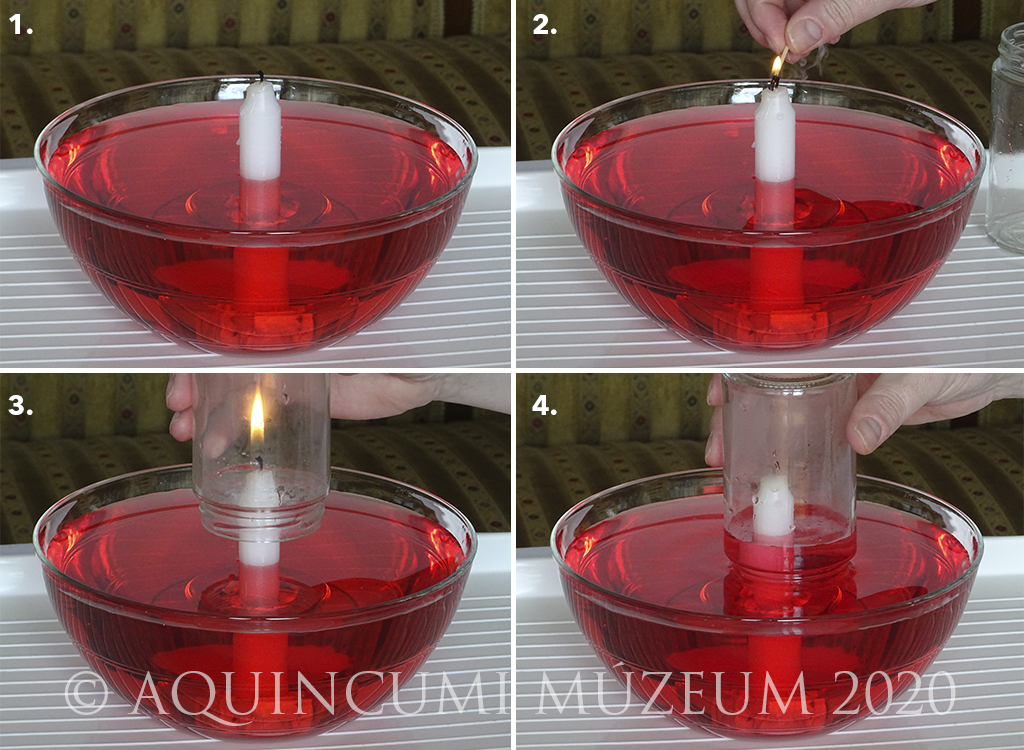
Philon of Byzantium’s candle experiment
How does it work?
Robots in the ancient world?
The inventions of Ctesibius, Philon, and their fellow scientists made it possible for objects to move on their own or produce sounds at pre-determined times. At Alexandria this was made good use of by the royal court. In his book, entitled The Wise Men at Dinner, Athenaeus cites an epigram, according to which Ctesibius designed a rhyton, a horn-shaped drinking vessel, to be held by the hand of a statue of the wife of Ptolemy II Philadelphus, which produced a pleasant and beautiful sound. Elsewhere in his work, Athenaeus describes a procession during which the seated statue of Nysa, the nurse of Dionysus, on a cart would stand up and pour milk from a golden cup as libation.
In chapter 30 of his Pneumatics, Philon of Byzantium presents the theory behind such a moving statue. There is no magic here, just the application of the laws of physics presented through the simple experiments of previous chapters. What does the external observer see? A copper or bronze statue of a maid. The statue stands with a jug in the right hand and the left hand open. If someone puts a cup in its left hand, the statue starts to move, pouring first wine then water into the cup.
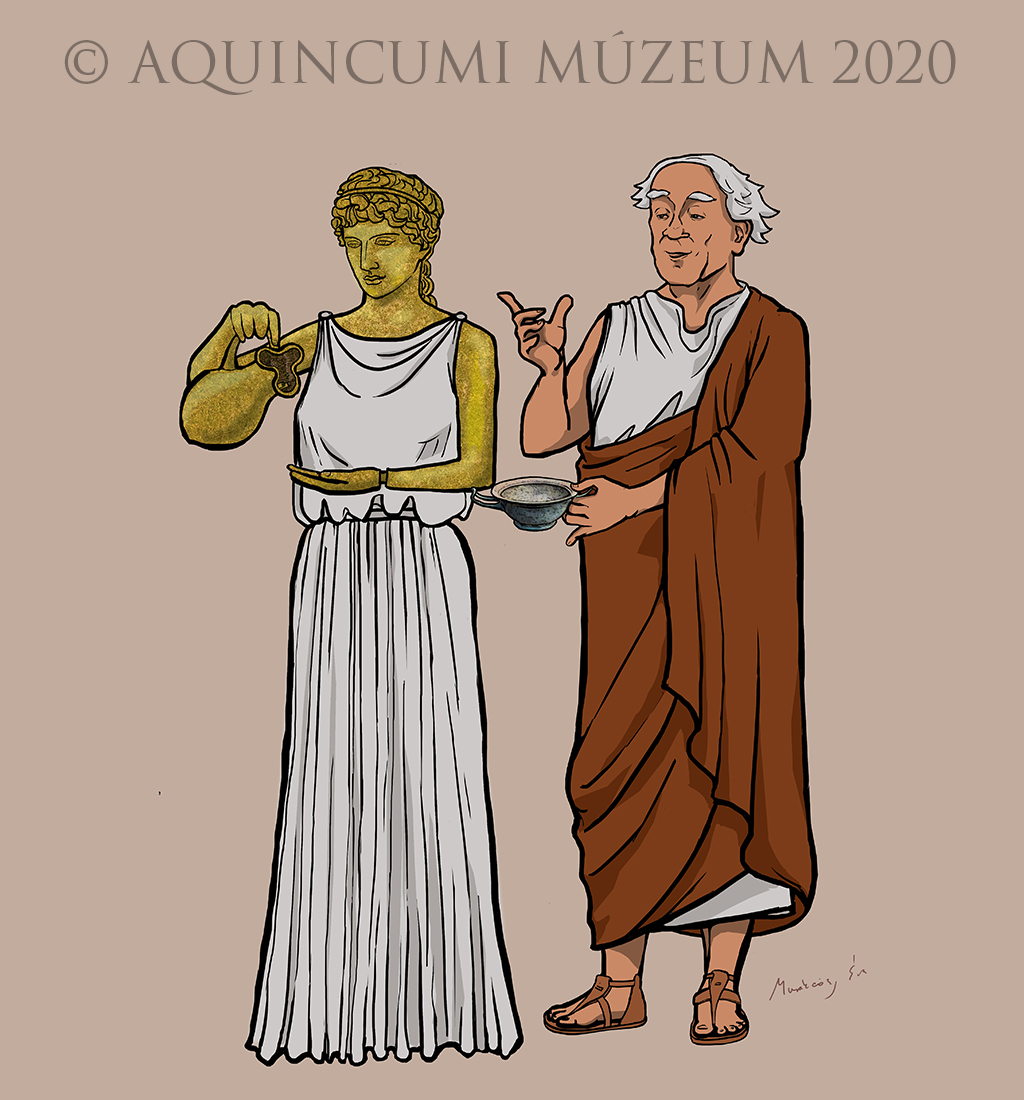
Philon with his invention, the ‘robot’ maid serving wine and water (drawing by: Éva Murakeözy)
How does this work? Hidden in the head or chest of the statue is a container with two parts. From each part runs a very thin tube to the rim of the jug held by the maid. One of the containers holds wine, and the other water. The tube from the wine container runs directly to the jug, while the one from the water container goes around in a circle inside the belly of the statue first before reaching the rim of the jug. From the top of each container runs another tube. These tubes end on the left of the statue, approximately at its belly, and in them flows air. At the end of each tube there is a low-friction, tight-fitting valve. The right hand only holds the jug and does not move, but the left arm can turn around a pivot. The statue’s left arm is also one of the arms of an angle lever, the other arm of which (the collarbone) operates the valves using rods. These valves can open or close the tubes through which air flows towards the liquid containers.
When someone places a cup of the right weight in the open left hand of the statue, the arm goes down, raising the collarbone. This pulls up the rods, opening the valves and allowing air to flow into the tubes, first through the tube of the wine container and then through that of the water container. Since air can now flow through the open valve towards the liquid in the container, the liquid flows out through the tube at the bottom of the container to the rim of the jug and then into the cup. The first liquid is the wine. The wine in it makes the cup heavier, which causes the left arm to go further down. This opens the valve of the tube to the water container, and so water is poured from the jug into the cup. In the meantime the valve of the tube carrying air to the wine container closes, and so no more wine is poured into the cup. Once the cup is full, it becomes even heavier, making the left arm go even further down. This closes the valve towards the water container. The customer can take his cup of wine and water. After all, in antiquity people were expected to drink their wine mixed with water. Cheers!
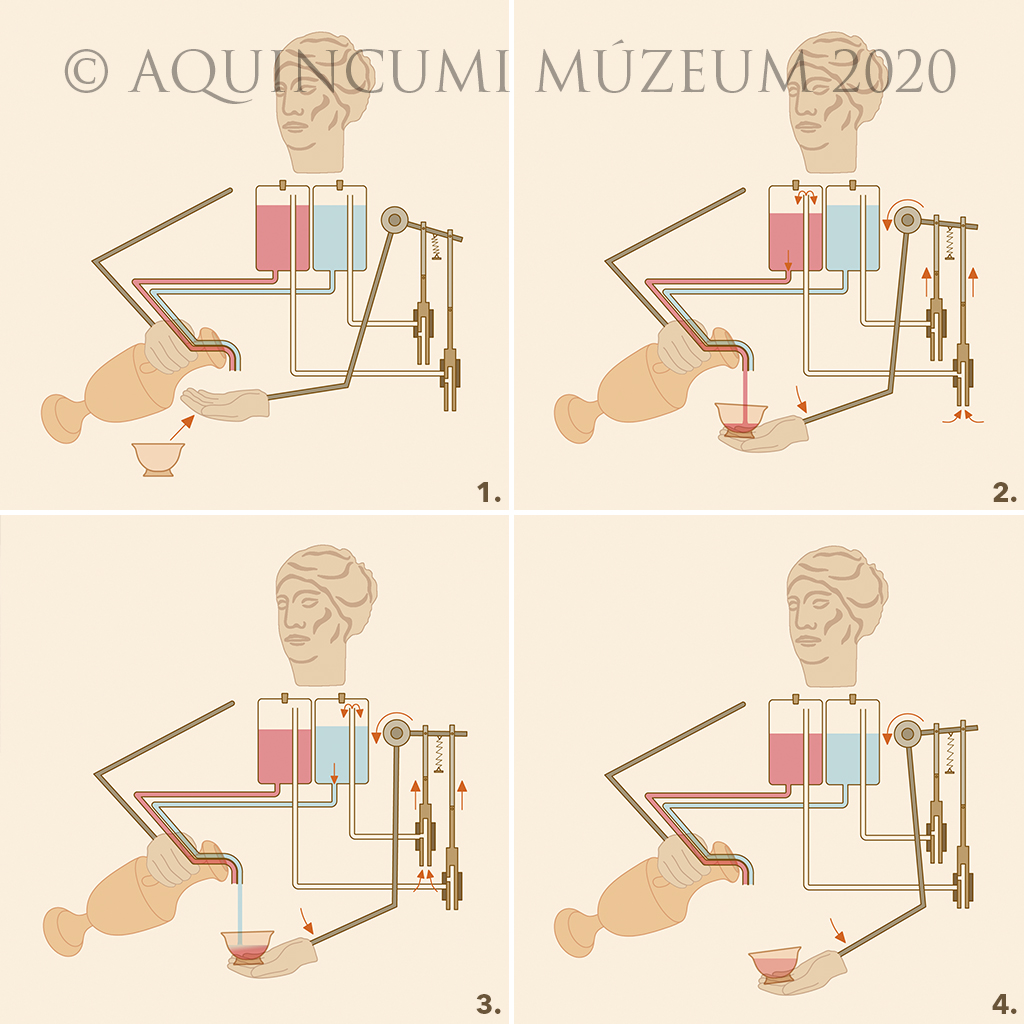
How Philon’s wine-pouring maid robot works (drawing by Tamás Lajtos, based on Philon’s Pneumatics chapter 30 and drawings from the Kotsanas Museum)
Written by Dr Gabriella Fényes
Click here to read the other entries of our online exhibition.


